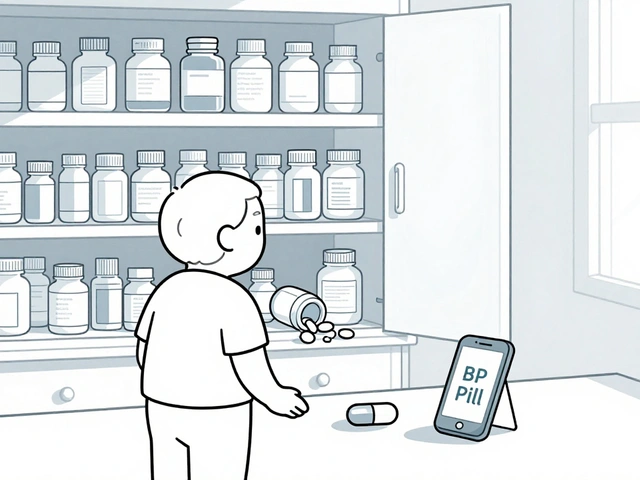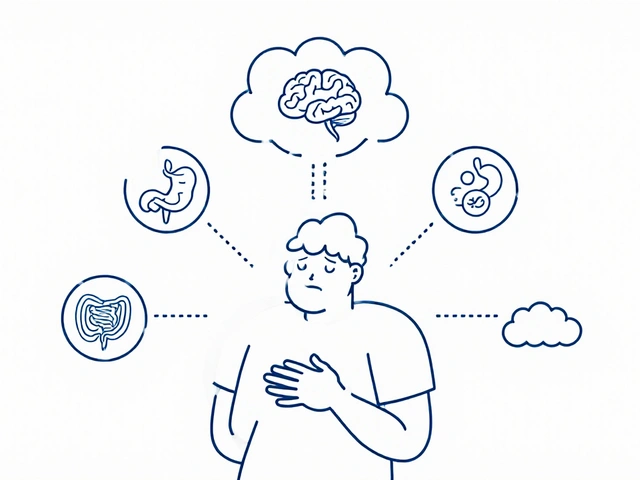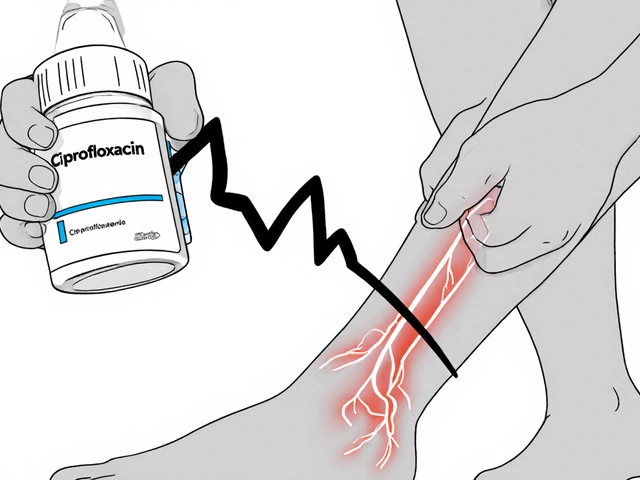Captopril – Easy Guide to Uses, Dosage, Side Effects and Buying Safely
If you’ve been prescribed captopril, you probably wonder how it actually helps and what you need to watch out for. In plain terms, captopril is an ACE‑inhibitor that relaxes blood vessels so your heart doesn’t have to work as hard. That drop in pressure can protect kidneys, lower the risk of strokes, and keep your heart healthier overall. Below we break down the key facts you need to feel confident about taking this medication.
How Captopril Works
When your body makes a hormone called angiotensin II, it tightens arteries and raises blood pressure. Captopril blocks the enzyme that creates this hormone, so the arteries stay relaxed. The result is smoother blood flow and less strain on the heart. This effect is why doctors use captopril for hypertension, heart failure, and even after a heart attack to improve survival rates.
Because it’s a short‑acting ACE‑inhibitor, captopril usually starts working within an hour, and its effects last about 6‑8 hours. That’s why most prescriptions call for two or three doses a day. If you miss a dose, take it as soon as you remember—unless it’s close to the next dose, then just skip the missed one. Avoid doubling up; the extra dose won’t give you better results but could increase side effects.
Practical Tips for Using Captopril
Start with the dose your doctor recommends, often 25 mg two to three times daily. Your doctor may adjust the amount based on blood pressure readings, kidney function, and how you feel. Always take captopril with a full glass of water, and you can take it with or without food. Some people notice a mild cough after a few days—this is a common ACE‑inhibitor side effect caused by excess bradykinin in the lungs.
Watch for these common side effects: a dry cough, dizziness, headache, or a taste change. Most are mild and fade as your body adjusts. If you develop swelling in the face, lips, or tongue, it could be an allergic reaction, and you should seek medical help right away. Also, keep an eye on potassium levels; captopril can raise potassium, especially if you’re on potassium‑rich supplements or a potassium‑sparing diuretic.
Drug interactions matter, too. NSAIDs like ibuprofen can blunt captopril’s blood‑pressure‑lowering effect and may stress your kidneys. Diuretics, especially thiazides, are often paired with captopril, but they require close monitoring of electrolytes. Always tell your pharmacist about every prescription, over‑the‑counter drug, and supplement you take.
When it comes to buying captopril, the safest route is a licensed pharmacy with a valid prescription. Online pharmacies can be convenient, but verify they require a prescription, display a physical address, and are accredited by a recognized pharmacy board. Look for signs like a pharmacy license number, secure website (https://), and clear contact information. Cheap “no‑prescription” offers are a red flag for counterfeit medication.
If cost is a concern, ask your doctor about generic versions—captopril is available as a low‑cost generic, and many insurance plans cover it. Some pharmacies also offer discount cards or price‑match programs. For those without insurance, reputable discount programs like GoodRx can show you a price list for nearby pharmacies.
Finally, keep a simple log of your blood pressure readings, any side effects, and how you feel each day. Bring this log to your next appointment; it helps the doctor fine‑tune your dose and catch any issues early. Remember, captopril is a tool to keep your heart and vessels working smoothly—using it responsibly and staying informed makes it work best for you.



